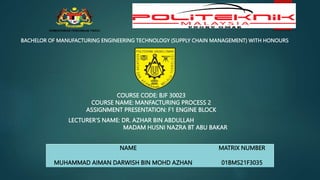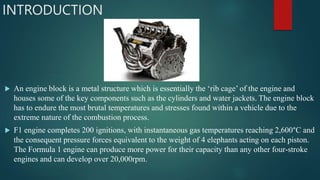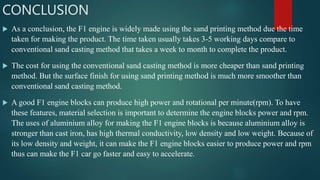This document discusses the manufacturing process of Formula 1 engine blocks. It begins by introducing the materials used, which is typically an aluminium alloy due to its low weight and heat conductivity properties. It then describes the sand 3D printing process used to create the molds for casting the engine blocks. Key steps include layering sand and a chemical binder to gradually build the mold, then pouring molten metal into the mold and controlling the cooling rate to achieve optimal material properties. Precision and reduced weight are advantages of this process over conventional sand casting. In conclusion, the sand printing method and use of aluminium alloy allows F1 engines to produce high power and RPM needed for racing.
















